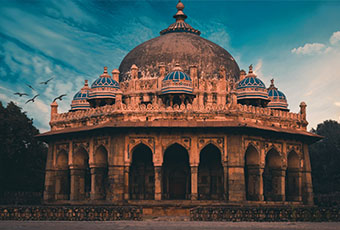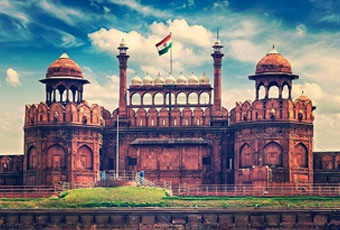Once the fame of the city of Tughlakabad, today, the decay of Tughalakabad Fort narrates the glory and pride of medieval times. Fighting its final battle against the wrath of time, Tughlakabad Fort is a best place to delve into and study the Tughlak dynasty. Ordered by the Ghiyas-ud-din-Tughlaq, the fort was a picture of his prowess. Standing big on the edge of the Tughlakabad city, a medieval city bit of modern-day Delhi. The Fort was an summary of grandeur, with its huge architecture spreading as far as one can. Today, the Fort is not more than a decay of its former glory. Yet amid all the ruins and talks of its former glory, one can witness the architecture of the Fort which made it so special. A small hiking train in itself, the Fort holds many of its secrets with in and one such secret is the Tughlakabad Fort Baolis. Hidden on the either side of the Fort, lies two Baolis. Once the integral part of the Fort’s functioning, today the Baolis just like the Fort waits for its conservation. Which is known as the West Baoli and East Baoli, hiking to the Baoli and walking down the stairs is nothing short to as of an adventure.
Once the fame of the city of Tughlakabad, today, the decay of Tughalakabad Fort narrates the glory and pride of medieval times. Fighting its final battle against the wrath of time, Tughlakabad Fort is a best place to delve into and study the Tughlak dynasty. Ordered by the Ghiyas-ud-din-Tughlaq, the fort was a picture of his prowess. Standing big on the edge of the Tughlakabad city, a medieval city bit of modern-day Delhi. The Fort was an summary of grandeur, with its huge architecture spreading as far as one can. Today, the Fort is not more than a decay of its former glory. Yet amid all the ruins and talks of its former glory, one can witness the architecture of the Fort which made it so special. A small hiking train in itself, the Fort holds many of its secrets with in and one such secret is the Tughlakabad Fort Baolis. Hidden on the either side of the Fort, lies two Baolis. Once the integral part of the Fort’s functioning, today the Baolis just like the Fort waits for its conservation. Which is known as the West Baoli and East Baoli, hiking to the Baoli and walking down the stairs is nothing short to as of an adventure.
HISTORY OF THE ATTRACTION
During the time of Tughlak dynasty, Gyas-ud-din-Tughlak ordered the construction of 13 Baolis out of which only 2 survive now, both inside the Tughlakabad Fort. Also known as East and West Baoli, both are in resonation with the 14th-century style of construction. The East Baoli which is called as Old Baoli is accessible by climbing a 30 steps platform. Made of rocks, the Baoli is intimidating to the tourist who look to descend into the stepwell. The West Baoli is not accessible now because of its deteriorating conditions. The Fort is around over an area of 6.5 km, most of which is covered by thick vegetation, hence it is recommended to travel with travel partner. The Fort and its surrounding complex, Now lies in poor condition and is still waiting for somebody to renovate it to a fragment of its former glory.
GETTING THERE
The nearest metro station to get is Tughlakabad metro station on Violet Line of Delhi Metro. From there you just need to take an auto to reach the Fort and Baoli.
THINGS TO DO IN & AROUND
Situated inside the Tughlakabad Fort, Befall Baoli gives you a chance to explore the ruins of once a great Tughlakabad Fort.
OPENING AND CLOSING TIMING
The Fort is opened all days of the week from 7 am to 5 pm.
BEST TIME TO VISIT
Winters in Delhi is the best time to explore the city with favourable climate for a sightseeing tour.












